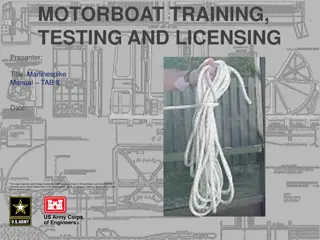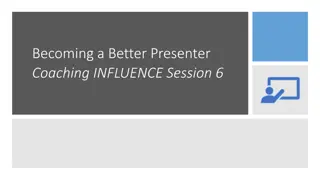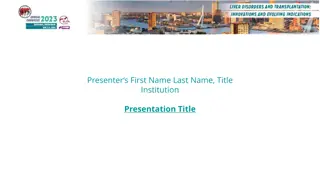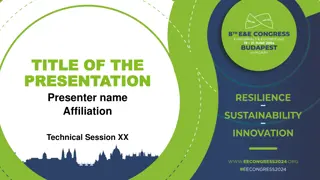
Best Practices for Dynamic Presentation Building
This presentation template offers a structured outline, focusing on best practices for creating visually effective slides that enhance attendee understanding and retention. Guidelines include using impactful images, prioritizing key information, and maintaining language respect. View the full deck for valuable resources and directives.
Download Presentation

Please find below an Image/Link to download the presentation.
The content on the website is provided AS IS for your information and personal use only. It may not be sold, licensed, or shared on other websites without obtaining consent from the author. If you encounter any issues during the download, it is possible that the publisher has removed the file from their server.
You are allowed to download the files provided on this website for personal or commercial use, subject to the condition that they are used lawfully. All files are the property of their respective owners.
The content on the website is provided AS IS for your information and personal use only. It may not be sold, licensed, or shared on other websites without obtaining consent from the author.
E N D
Presentation Transcript
1 USAGE GUIDE This presentation template contains various layout slides, including: Title Slide, Section Breaker Slide, Pull Quote or Emphasis Slide, Blank Slide, and several Content Slides. To Add a New Slide Layout: 1. In the slide thumbnail pane on the left, click the slide that you want your new slide to follow. 2. On the Home tab, click the drop down for New Slide. 3. In the New Slide dialog box, select the desired layout. To Change the Layout of an Existing Slide: 1. Navigate to the slide you want to change and right click on the thumbnail. 2. Select Layout. 3. Make your selection. DO NOT include this slide in your presentation. This slide is for instructional purpose only and should be deleted upon finalizing your presentation. Right click on the thumbnail and select Delete Slide.
3 Best Presentation Practices & Resources This slide template includes a structured outline to help you build a dynamic presentation. Please review the full deck before beginning to develop your slides. This guidance is rooted in evidence-based education to help you prepare slides that are visually effective and structure information in a way that will support attendee understanding and retention. For additional presentation guidance, including ASCO s QR code policy, please review the Presentation Resources and Directives module in Speaker Center
4 Abstract Presenter Guidance and Directives Lead with the End People remember best what they hear first and last. Focus Your Talk Cognitive overload is the enemy of learning. Use Images & Graphics Attendees should be listening to you speak instead of trying to read your slides. Include a Lay Summary Provide a resource for patients and advocates. Adhere toThe Language of Respect ASCO is committed to the use of language that demonstrates appropriate respect for patients, families, advocates, and health care providers.
Abstract Title Authors
6 Key Takeaway Points/Conclusions People remember best what they hear first and last. Directive: Include your learning outcomes/actionable takeaways at the start and end of your presentation. Include the 1-2 main points you want people to remember from your presentation What is directly applicable now to clinical care and/or research?
7 Background
8 Methods
9 Results
10 Limitations
11 Reiterate Key Takeaway Points/Conclusions Evidence-based, solutions-focused education provides high- quality learning. Reminder: People remember best what they hear first and last Include the same 1-2 main points you listed on your first key takeaways slide What is directly applicable now to clinical care and/or research?
12 Include a Lay Summary Slide This slide does not need to be presented, but it will serve as a resource for patients and advocates who may view your presentation recording and slides after the meeting. A lay summary slide should provide easy to understand, plain text answers to the following questions: What did this research tell us? Who does this research impact? What does this mean for patients right now?





















